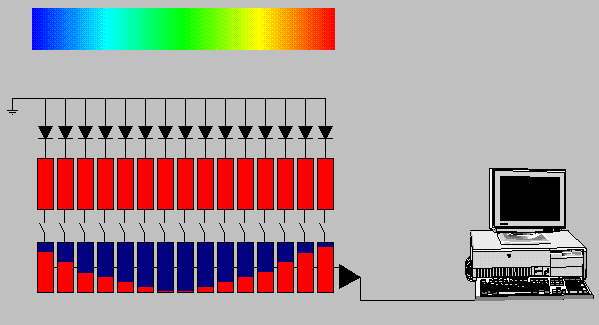 Spectrometer
Operation
Spectrometer
Operation
![]()
Below is a small animation showing how Ocean Optics S2000 Spectrometers operate. If you do not see anything between the horizontal lines, you will need to upgrade your web browser to see the animation. Either Microsoft's Internet Explorer or Netscape's Navigator are ideal choices.

Light enters the optical fiber and is efficiently transmitted to the spectrometer. Once in the spectrometer, the divergent light emerging from the optical fiber is collimated by a spherical mirror. The collimated light is diffracted by a plane grating, the resulting diffracted light is focused by a second spherical mirror. An image of the spectrum is projected onto a 1-dimensional linear CCD array, and the data is transferred to a computer through an A/D card.

Light, represented by the rainbow at the top of the image, impinges on photodiodes with the CCD pixels. These reverse-biased photodiodes discharge a capacitor at a rate proportional to the photon flux. The charge of the capacitors is represented by the top row of red/yellow boxes. When the integration period of the detector is complete, a series of switches close and transfer the charge to a shift register. After the transfer to the shift register is complete, the switches open and the capacitors attached to the photodiodes are recharged and a new integration period begins. At the same time that light energy is being integrated, the data is read out of the shift register by an A/D card. The digitized data is then displayed on your computer.